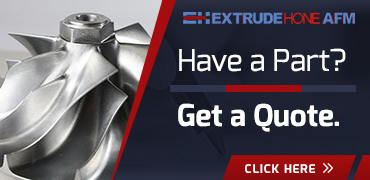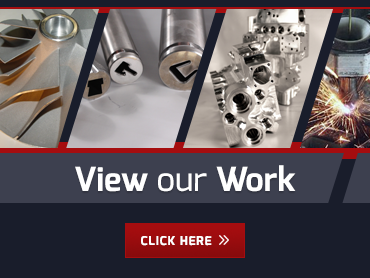FAQ – Automotive
What preparations should I make before I send my parts to send it in for Extrude Hone?
Extrude Honing is done on the bare casting; therefore, you would want to completely disassemble your component. Everything should be removed, especially any electronics.
What is the turnaround time for my part to be Extrude Honed?
Generally, Aluminum parts are done in 7 to 11 working days
Cast Iron parts take approximately 3 – 4 weeks
How much material is removed?
Up to approximately 1 millimeter (Approximately .040”) is removed, as necessary to improve flow
Which component is most important to Extrude Hone?
If you only processed one component, the greatest advantage would be the intake manifold
(See our Automotive Page, for more details).
Isn't a rough surface finish in the intake port better for fuel atomization?
No, fuel atomization is more the function of a carburetor, or injector, not the manifold, or intake port. Roughing the finish does not help anything like that. To test this theory, we replaced the top plate of an aftermarket "Crossfire" intake manifold with a sheet of lexan, so we could see fuel and air moving in the manifold as the engine ran. At idle (500- 700rpm), we could see a little puddling in some areas; but any increase in RPM above idle would completely evacuate the plenum area. No time for anything to collect. The vacuum pressure is just too great, no matter the surface finish.
How much increase in horsepower does Extrude Honing make?
Extrude Honing generally increases flow capability by some 25%, in most cases. How that translates into horsepower will depend on how your combination is configured and tuned.
I want my parts to be flow matched. Can my parts be bolted together while they are Extrude Honed?
Fixturing assembled parts is physically impossible; but mating part can still be easily matched for flow. What we do, is we the match parts to the gasket. This way they will have the same dimensions post process.
If I want to change the valve guides in my cylinder heads, should I do that before or after Extrude Honing?
It would be better to change the guides BEFORE Extrude Honing. The reasoning here, is that the operations to remove the old guides and put in new ones would likely compromise the surface finish in the ports. This would work against the benefits of the process
What about a valve job?
It would be better to have this done BEFORE Extrude Honing, also. The valve job will put a chamfer with two sharp edges on the valve seats. The process will produce a radius at these edges, increasing flow at low lift. Your valves spend more time at low lift, so flow at that position is improved
Extrude Hone my stock exhaust manifolds, or use an aftermarket Header,… Which is better?
To begin with. no amount of Extrude Honing will ever make a cast exhaust manifold outflow a header. Actually there are only three scenarios where anyone would undertake to Extrude Hone a cast exhaust manifold:
- A race restriction that only allows the stock exhaust
- An engine that is not addressed by any aftermarket manufacturers
- The enthusiast who wants original components only.
Most everyone else will likely choose to go to an aftermarket header. Generally, it would be a better deal for the money, and from a standpoint of flow capability.
Can you Extrude Hone Headers?
Generally, no. The reason for this is that the weld between the tubing and the flange would be disrupted and cause leaks. In addition, the surface finish is fairly good in most headers; so Extrude Honing really is not a practical solution in most cases.
Tip: When you look into the header, you will notice a weld bead of about 1/8 of an inch all around. That amounts to a loss of ½ of your flow area. Not good for flow.
What can be done is to put a weld bead on the OUTSIDE of the tubing to the flange . Then, take and blend down the interior weld bead to a more accommodating angle. This creates a tapered entrance to the tubes and sets off a venturi effect to your exhaust flow.
How do you control the amount of material removed?
Primary variables are the tooling, the media flow pressure, the viscosity and abrasive concentration of the media.
The tooling is a holding fixture that directs media flow to the target area of the part, while protecting areas where abrasion is not desired. Media flow pressure available has a range of 200 to 2000 psi.
The media carrier, silicon rubber, comes in three basic viscosities: high, medium and low; while the silicon carbide abrasive ranges in size from the fineness of baby powder to the coarseness of buckshot.
All these taken together are manipulated to produce the desired result on the workpiece. For this reason, each and every application destined for Extrude Hone AFM has to be engineered and developed.




